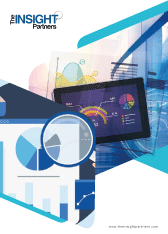$4450
$3560
The IT Operations Analytics Market size is projected to reach US$ 22.84 billion in 2024 and is projected to reach US$ 117.17 billion by 2031. The market is expected to register a CAGR of 26.3% during 2025–2031.
IT Operations Analytics Market Analysis
The global ITOA market is expanding as organizations seek to improve uptime, preserve business continuity, and derive actionable intelligence from complex IT environments. Key market drivers include the relentless growth in data volumes, cloud adoption, increasing system complexity, and the need for proactive security and compliance management. The rise of hybrid and multi-cloud architectures, IoT deployments, and digital transformation initiatives further expands the opportunities for ITOA adoption. However, factors such as the high cost of advanced analytics platforms, challenges in integrating with legacy systems, and talent shortages in analytics and AI can restrain market growth. Despite these constraints, demand is strong for solutions that automate performance monitoring, streamline troubleshooting, and enable data-driven IT strategies.
IT Operations Analytics Market Overview
IT Operations Analytics (ITOA) refers to the use of advanced data analysis, machine learning, and automation techniques to monitor, evaluate, and optimize IT system performance. By analyzing real-time and historical data generated by networks, applications, cloud infrastructure, and devices, ITOA enables IT teams to prevent problems, detect anomalies, and resolve issues proactively. This analytics discipline supports a variety of applications, including root cause analysis, system performance optimization, incident management, resource allocation, and security monitoring. Key usage areas span predictive analytics to anticipate outages, visualization for system mapping, performance monitoring, compliance tracking, and orchestration of automated responses. There are several types of ITOA solutions, such as event correlation tools, machine data platforms, and AI-driven observability suites, all designed to drive faster, more efficient, insight-driven IT operations.
Customize Research To Suit Your Requirement
We can optimize and tailor the analysis and scope which is unmet through our standard offerings. This flexibility will help you gain the exact information needed for your business planning and decision making.
IT Operations Analytics Market: Strategic Insights


Naveen
Have a question?
Naveen will walk you through a 15-minute call to present the report’s content and answer all queries if you have any.
 Speak to Analyst
IT Operations Analytics Market Drivers and Opportunities
Speak to Analyst
IT Operations Analytics Market Drivers and Opportunities
Customize Research To Suit Your Requirement
We can optimize and tailor the analysis and scope which is unmet through our standard offerings. This flexibility will help you gain the exact information needed for your business planning and decision making.
IT Operations Analytics Market: Strategic Insights


Naveen
Have a question?
Naveen will walk you through a 15-minute call to present the report’s content and answer all queries if you have any.
 Speak to Analyst
Speak to Analyst
Market Drivers:
Rising Demand for Cloud Computing:
The rise of cloud computing has fundamentally transformed the landscape of IT Operations Analytics (ITOA), accelerating market growth by introducing unprecedented scalability, flexibility, and ease of integration for analytics tools. Modern cloud environments generate large, continuous streams of new data, spanning applications, devices, user interactions, and transactions. IT organizations leverage cloud-based ITOA solutions to process and contextualize this operational data, extracting actionable insights in real time for optimized system performance, proactive incident response, and enhanced service reliability.
Growing need for Real-Time Insights and Proactive Management:
ITOA tools empower IT teams to continuously monitor system health, track key performance indicators (KPIs), detect anomalies, and visualize dependencies across networks and applications. Real-time data analytics enables organizations to pinpoint the root causes of problems quickly, often before they impact end users or the business. For example, an incident affecting system performance can be correlated instantly with changes in infrastructure or usage patterns, and alerts can be routed to the correct teams for swift resolution, reducing mean time to repair dramatically. Major financial institutions have leveraged unified reporting platforms to eliminate manual reporting cycles—transforming days of delayed response into minutes of actionable insight and ultimately strengthening business continuity.
Market Opportunities:
Expanding Adoption of Analytics as a Service (AaaS):
As organizations grapple with exploding volumes of operational data and increased infrastructure complexity, Analytics as a Service (AaaS) is emerging as a powerful delivery model—offering managed, scalable analytics via cloud platforms without the burden of heavy infrastructure investments. AaaS platforms integrate AI and machine learning by default, enabling real-time analytics, , and predictive insight out of the box. This model aligns perfectly with ITOA needs, where enterprises seek immediate, intelligence-driven visibility into IT operations without extensive implementation overhead.Industry-Specific Customization of ITOA Solutions:
As enterprises across verticals increasingly demand tailored observability capabilities, industry-specific customization becomes a powerful growth lever for the ITOA market. Generic analytics platforms alone often fall short of addressing sector-specific workflows, compliance requirements, or data structures. When ITOA solutions are customized—such as manufacturing-grade analytics, healthcare?focused observability, or telecom?centric network intelligence—they deliver greater value by aligning more closely with business and operational realities. For instance, manufacturers with large-scale IoT deployments benefit from real-time machine monitoring and . Observata’s manufacturing observability platform enabled a mid-sized automotive parts plant to reduce energy waste and streamline production protocols, unlocking sustainability and efficiency improvements tailored to the assembly-floor context.
IT Operations Analytics Market Report Segmentation Analysis
The IT operations analytics market is divided into different segments to give a clearer view of how it works, its growth potential, and the latest trends. Below is the standard segmentation approach used in most industry reports:
By Offering:
Software:
The software segment forms the core of the IT Operations Analytics market, offering platforms and tools that enable enterprises to monitor, analyze, and optimize IT infrastructure and application performance. These software solutions leverage AI, machine learning, and real-time analytics to process vast volumes of operational data, including logs, metrics, events, and traces.Services:
The services segment complements ITOA software by providing the expertise, customization, and operational support needed to maximize value from analytics platforms. It includes consulting, integration, implementation, training, and ongoing support, as well as managed services where external providers oversee daily IT operations analytics tasks. Service providers help align ITOA tools with business objectives, ensure regulatory compliance, and enable seamless data integration across systems.
By Deployment:
On-Premises:
On-premises deployment remains a critical segment of the IT Operations Analytics market, especially for organizations operating in regulated industries such as banking, government, defense, and healthcare. These entities prioritize data sovereignty, strict compliance, and tighter control over infrastructure—making on-premises ITOA solutions a preferred choice. This model provides enhanced customization and security, allowing organizations to tailor analytics platforms to specific operational environments and internal policies.Cloud:
Cloud deployment is the fastest-growing segment in the IT Operations Analytics market, driven by the shift toward scalable, flexible, and on-demand digital infrastructure. Cloud-based ITOA platforms offer rapid deployment, minimal maintenance overhead, and continuous updates—making them ideal for modern DevOps and agile environments. These solutions support dynamic resource monitoring, real-time analytics, and seamless integration across SaaS, PaaS, and IaaS ecosystems.Hybrid:
Hybrid deployment represents a strategic middle ground in the IT Operations Analytics market, offering the flexibility to monitor both cloud-based and on-premises systems. It is increasingly popular among large enterprises undergoing digital transformation but still dependent on legacy infrastructure.
By Application:
- Application Performance Management (APM)
- Root Cause Analysis (RCA)
- Network and Security Management
- Others
Industry Vertical:
- BFSI
- Retail and E-commerce
- IT and Telecom
- Healthcare
- Manufacturing
- Others
By Geography:
- North America
- Europe
- Asia Pacific
- South & Central America
- Middle East & Africa
The North America IT operations analytics market is the largest globally, driven by early cloud adoption, large-scale enterprise digitalization, and a strong focus on automation and cybersecurity. The U.S. and Canada host a dense concentration of Fortune 500 companies, hyperscale cloud providers, and tech-driven industries such as finance, telecom, e-commerce, and healthcare—all heavily reliant on real-time performance monitoring and AIOps capabilities.
IT Operations Analytics Market Report ScopeIT Operations Analytics Market Share Analysis by Geography
The Asia Pacific region is emerging as one of the fastest-growing markets for IT operations analytics, fueled by rapid digital transformation, Industry 4.0 and smart city strategies, and smart infrastructure initiatives. Nations such as China, India, Japan, South Korea, Singapore, and Australia are major contributors, each with different drivers. Startups and telecom firms in the above mentioned countries are implementing ITOA tools to support large-scale, mobile-first consumer platforms.
The IT operations analytics market grows differently in each region. This is because of factors like digital transformation, technological advancement, and industrial expansion. Below is a summary of market share and trends by region:
1. North America
Market Share:
Holds a major share of the global IT operations analytics market
Key Drivers:
- Early cloud adoption
- Large-scale enterprise digitalization
- A strong focus on automation and cybersecurity
Trends:
innovation in cloud-native observability tools, hybrid infrastructure monitoring, and security-integrated ITOA solutions
2. Europe
Market Share:
Substantial shareKey Drivers:
- Strict data governance laws
- Industry-specific compliance requirements
- An increasing push for digital sovereignty.
Trends:
Demand for modular, policy-aware analytics platforms, enterprises modernizing legacy infrastructure, and transitioning to cloud or hybrid models
3. Asia Pacific
Market Share:
Fastest-growing region with rising market share every yearKey Drivers:
- Accelerating cloud adoption
- Smart infrastructure initiatives
- Large-scale digital transformation across emerging and developed economies
Trends:
Investment in ITOA as part of broader Industry 4.0 and smart city strategies and high focus on real-time anomaly detection
4. South and Central America
Market Share:
Growing market with steady progressKey Drivers:
- Increasing government investment in digital infrastructure
- Smart cities and public sector modernization
Trends:
National strategies focused on AI, cloud, and digital transformation
5. Middle East and Africa
Market Share:
Although small, but growing quicklyKey Drivers:
- Digital Transformation
- Growing appetite for intelligent IT operations, especially in sectors like banking, telecom, and government services
Trends:
Organizations are increasingly adopting ITOA tools to handle challenges related to system availability, network latency, and resource optimization.
IT Operations Analytics Market Players Density: Understanding Its Impact on Business Dynamics
High Market Density and Competition
Competition is strong due to the presence of established players such as International Business Machines Corp, Cisco Systems Inc, New Relic Inc, Dynatrace LLC, and ServiceNow Inc. In addition, regional and specialized vendors like Oracle Corp, BMC Software, Inc., Microsoft Corp, Open Text Corp, and Broadcom Inc are contributing to a dynamic and competitive landscape.
This high level of competition urges companies to stand out by offering:
- Advanced investigation technologies (e.g., AI-driven analytics, ML, and Analytics as a Service (AaaS))
- Cross-platform forensic support (supporting hybrid infrastructure including on-premises, cloud, and edge environments)
- Compliance-centric solutions for regulations like GDPR, CCPA, and SOX
- Rapid root cause analysis and automated remediation
Opportunities and Strategic Moves
- Strategic alliances with AIOps vendors, cloud service providers, and DevOps teams are becoming essential for expanding platform capabilities and accelerating digital transformation initiatives.
- Cloud-native ITOA solutions and ITOA-as-a-Service models are gaining momentum, driven by the need for scalability, flexibility, and real-time data processing.
- Expansion into emerging regions (Asia Pacific, Middle East, Latin America) is opening new growth avenues as organizations modernize their IT infrastructure and seek proactive IT management tools.
- R&D investments in artificial intelligence, machine learning, and predictive analytics are enabling automated anomaly detection, root cause analysis, and performance forecasting.
- Integration with ITSM, APM, NPM, and observability platforms is enhancing visibility, reducing mean time to resolution (MTTR), and supporting unified monitoring strategies.
Major Companies operating in the IT Operations Analytics Market are:
- International Business Machines Corp
- Dynatrace LLC
- Open Text Corp
- Cisco Systems Inc
- BMC Software, Inc.
- Microsoft Corp
- New Relic Inc
- Broadcom Inc
- ServiceNow Inc
- Oracle Corp
Disclaimer: The companies listed above are not ranked in any particular order.
Other companies analysed during the course of research:
- Sisense Ltd.
- SolarWinds Worldwiden LLC
- Hitachi Vantara Corp
- NetApp Inc
- Elastic
- Broadcom
- Hewlett Packard Enterprise
- Sumo Logic
- Exabeam
- PagerDuty, Inc.
- LogicMonitor
- Dell Inc.
- ScienceLogic
- Datadog
- Zoho Corporation Pvt. Ltd.
- Atlassian
- Freshworks Inc.
- Anker
- Alteryx
- Nexthink
- HCL Technologies
- Cloud Software Group
- Veritas
- ExtraHop Networks
- Apica
IT Operations Analytics Market News and Recent Developments
IBM introduced new agentic and automation capabilities
In April 2025, IBM introduced new agentic and automation capabilities to its managed detection and response service offerings to help enable autonomous security operations and predictive threat intelligence for clients. IBM is launching Autonomous Threat Operations Machine (ATOM), an agentic AI system providing autonomous threat triage, investigation, and remediation with minimal human intervention. IBM is also introducing the new X-Force Predictive Threat Intelligence (PTI) agent for ATOM, which leverages industry vertical-specific AI foundation models to generate predictive threat insights on potential adversarial activity and minimize manual threat hunting efforts.Cisco introduced new capabilities in Cisco XDR and Splunk Security
In April 2025, Cisco announced key innovations and partnerships to help security teams face the rising challenges of the AI era. The company introduced new capabilities in Cisco XDR and Splunk Security, a deeper partnership with ServiceNow, and the launch of Foundation AI.Dynatrace Announced New AI-powered Log Analytics Capabilities
In February 2025, Dynatrace, the leading AI-powered observability platform, announced new AI-powered log analytics capabilities to address the growing challenges organizations face with legacy log management solutions. Legacy solutions often operate independently from existing monitoring tools, perpetuating operational inefficiencies that lead to delayed incident resolution, increased costs, and security vulnerabilities.BMC Updated its BMC Helix platform
In May 2025, BMC Helix, a global leader in software solutions that help the world’s most forward-thinking IT organizations turn AI into action, announced updates to the BMC Helix platform that transform productivity and improve employee experience through agentic AI. The Helix platform, one of the first market-ready solutions to use gen AI, improves the quality of service interactions and overall operator experience with insights and automation. The BMC Helix IT Operations Management for AIOps 25.2 release includes new and expanded AI agents to extend observability, discovery, and insights that prevent major incidents and optimize application performance.BMC Adding Generative AI, Low-Code/No-Code Development
In December 2023, BMC, a global leader in software solutions for the Autonomous Digital Enterprise, is adding generative AI, low-code/no-code development, and contextual tooling to the BMC Helix Service Management solution, helping enterprise customers strengthen their security posture and elevate ways of working.
IT Operations Analytics Market Report Coverage and Deliverables
The " IT Operations Analytics Market Size and Forecast (2021–2031)" report provides a detailed analysis of the market covering below areas:
- IT Operations Analytics Market size and forecast at global, regional, and country levels for all the key market segments covered under the scope
- IT Operations Analytics Market trends, as well as market dynamics such as drivers, restraints, and key opportunities
- Detailed PEST and SWOT analysis
- IT Operations Analytics Market analysis covering key market trends, global and regional framework, major players, regulations, and recent market developments
- Industry landscape and competition analysis covering market concentration, heat map analysis, prominent players, and recent developments for the IT Operations Analytics Market
- Detailed company profiles

Report Coverage
Revenue forecast, Company Analysis, Industry landscape, Growth factors, and Trends

Segment Covered
This text is related
to segments covered.

Regional Scope
North America, Europe, Asia Pacific, Middle East & Africa, South & Central America

Country Scope
This text is related
to country scope.
Frequently Asked Questions
As of 2024, the global IT operations analytics market is valued around USD 22.84 billion, with forecasts projecting growth to USD 117.17 billion by 2031, driven by the growing complexity of IT environments, rising demand for cloud computing, and growing need for real-time insights and proactive management.
The market is projected to grow at a CAGR of 26.3% from 2025 to 2031, depending on the region and subsegment, such as cloud and on-premise.
Key sectors include:
1. BFSI
2. IT and Telecom
3. Retail and E-Commerce
4. Manufacturing
5. Healthcare
6. Others
IT operations analytics comprises:
1. Software
2. Services
The main categories include:
1. On-premise
2. Cloud
Popular application include:
1. Application Performance Management (APM)
2. Root Cause Analysis
3. Network and Security Management
4. Others
North America leads in market share
Asia-Pacific, especially China and Japan, are witnessing the fastest growth due to growing investments in IT infrastructure and a focus on optimizing IT operations across various industries
IT operations analytics supports by:
The IT Operations Analytics (ITOA) market is undergoing a significant transformation, driven primarily by the integration of Artificial Intelligence (AI) and Machine Learning (ML). As enterprises increasingly adopt cloud-native architectures, DevOps practices, and hybrid IT infrastructures, traditional rule-based monitoring systems are struggling to keep pace with the complexity and scale of modern environments. AI and ML are emerging as critical enablers, allowing organizations to transition from reactive to predictive and even prescriptive IT operations.
The List of Companies - IT Operations Analytics Market
- Cisco Systems, Inc.
- Microsoft Corporation
- Dynatrace LLC
- International Business Machines Corp
- New Relic, Inc.
- Open Text Corporation
- BMC Software, Inc.
- ServiceNow, Inc.
- Broadcom
- SolarWinds Worldwide, LLC.
The Insight Partners performs research in 4 major stages: Data Collection & Secondary Research, Primary Research, Data Analysis and Data Triangulation & Final Review.
- Data Collection and Secondary Research:
As a market research and consulting firm operating from a decade, we have published many reports and advised several clients across the globe. First step for any study will start with an assessment of currently available data and insights from existing reports. Further, historical and current market information is collected from Investor Presentations, Annual Reports, SEC Filings, etc., and other information related to company’s performance and market positioning are gathered from Paid Databases (Factiva, Hoovers, and Reuters) and various other publications available in public domain.
Several associations trade associates, technical forums, institutes, societies and organizations are accessed to gain technical as well as market related insights through their publications such as research papers, blogs and press releases related to the studies are referred to get cues about the market. Further, white papers, journals, magazines, and other news articles published in the last 3 years are scrutinized and analyzed to understand the current market trends.
- Primary Research:
The primarily interview analysis comprise of data obtained from industry participants interview and answers to survey questions gathered by in-house primary team.
For primary research, interviews are conducted with industry experts/CEOs/Marketing Managers/Sales Managers/VPs/Subject Matter Experts from both demand and supply side to get a 360-degree view of the market. The primary team conducts several interviews based on the complexity of the markets to understand the various market trends and dynamics which makes research more credible and precise.
A typical research interview fulfils the following functions:
- Provides first-hand information on the market size, market trends, growth trends, competitive landscape, and outlook
- Validates and strengthens in-house secondary research findings
- Develops the analysis team’s expertise and market understanding
Primary research involves email interactions and telephone interviews for each market, category, segment, and sub-segment across geographies. The participants who typically take part in such a process include, but are not limited to:
- Industry participants: VPs, business development managers, market intelligence managers and national sales managers
- Outside experts: Valuation experts, research analysts and key opinion leaders specializing in the electronics and semiconductor industry.
Below is the breakup of our primary respondents by company, designation, and region:

Once we receive the confirmation from primary research sources or primary respondents, we finalize the base year market estimation and forecast the data as per the macroeconomic and microeconomic factors assessed during data collection.
- Data Analysis:
Once data is validated through both secondary as well as primary respondents, we finalize the market estimations by hypothesis formulation and factor analysis at regional and country level.
- 3.1 Macro-Economic Factor Analysis:
We analyse macroeconomic indicators such the gross domestic product (GDP), increase in the demand for goods and services across industries, technological advancement, regional economic growth, governmental policies, the influence of COVID-19, PEST analysis, and other aspects. This analysis aids in setting benchmarks for various nations/regions and approximating market splits. Additionally, the general trend of the aforementioned components aid in determining the market's development possibilities.
- 3.2 Country Level Data:
Various factors that are especially aligned to the country are taken into account to determine the market size for a certain area and country, including the presence of vendors, such as headquarters and offices, the country's GDP, demand patterns, and industry growth. To comprehend the market dynamics for the nation, a number of growth variables, inhibitors, application areas, and current market trends are researched. The aforementioned elements aid in determining the country's overall market's growth potential.
- 3.3 Company Profile:
The “Table of Contents” is formulated by listing and analyzing more than 25 - 30 companies operating in the market ecosystem across geographies. However, we profile only 10 companies as a standard practice in our syndicate reports. These 10 companies comprise leading, emerging, and regional players. Nonetheless, our analysis is not restricted to the 10 listed companies, we also analyze other companies present in the market to develop a holistic view and understand the prevailing trends. The “Company Profiles” section in the report covers key facts, business description, products & services, financial information, SWOT analysis, and key developments. The financial information presented is extracted from the annual reports and official documents of the publicly listed companies. Upon collecting the information for the sections of respective companies, we verify them via various primary sources and then compile the data in respective company profiles. The company level information helps us in deriving the base number as well as in forecasting the market size.
- 3.4 Developing Base Number:
Aggregation of sales statistics (2020-2022) and macro-economic factor, and other secondary and primary research insights are utilized to arrive at base number and related market shares for 2022. The data gaps are identified in this step and relevant market data is analyzed, collected from paid primary interviews or databases. On finalizing the base year market size, forecasts are developed on the basis of macro-economic, industry and market growth factors and company level analysis.
- Data Triangulation and Final Review:
The market findings and base year market size calculations are validated from supply as well as demand side. Demand side validations are based on macro-economic factor analysis and benchmarks for respective regions and countries. In case of supply side validations, revenues of major companies are estimated (in case not available) based on industry benchmark, approximate number of employees, product portfolio, and primary interviews revenues are gathered. Further revenue from target product/service segment is assessed to avoid overshooting of market statistics. In case of heavy deviations between supply and demand side values, all thes steps are repeated to achieve synchronization.
We follow an iterative model, wherein we share our research findings with Subject Matter Experts (SME’s) and Key Opinion Leaders (KOLs) until consensus view of the market is not formulated – this model negates any drastic deviation in the opinions of experts. Only validated and universally acceptable research findings are quoted in our reports.
We have important check points that we use to validate our research findings – which we call – data triangulation, where we validate the information, we generate from secondary sources with primary interviews and then we re-validate with our internal data bases and Subject matter experts. This comprehensive model enables us to deliver high quality, reliable data in shortest possible time.
Trends and growth analysis reports related to IT Operations Analytics Market

Aug 2025
Flight Planning Software Market
Size and Forecast (2021 - 2031), Global and Regional Share, Trend, and Growth Opportunity Analysis Report Coverage: By Component (Software and Services), Deployment (Cloud and On-Premise), Application (Logistics and Cargo, Airport, Private Airlines, Commercial Airlines, Flight School and Training Center, and Military and Defense), and Geography

Aug 2025
Deepfake AI Detection Market
Size and Forecast (2021 - 2031), Global and Regional Share, Trend, and Growth Opportunity Analysis Report Coverage: By Component (Software and Services), Deployment (Cloud and On-Premises), Enterprise Size (Large Enterprises and SMEs), Industry Vertical (Media and Entertainment, BFSI, Government and Politics, Healthcare and Life Sciences, IT and Telecom, Retail and E-Commerce, and Others), and Geography

Aug 2025
Electronic Patient-Reported Outcomes (ePROS) Market
Size and Forecast (2021 - 2031), Global and Regional Share, Trend, and Growth Opportunity Analysis Report Coverage: By Delivery Mode (Cloud Based and On-Premises), Application (Oncology, Respiratory, and Others), End User [Contract Research Organizations (CROs), Pharmaceutical Companies, and Others], and Geography (North America, Europe, Asia Pacific, Middle East & Africa, and South & Central America)

Aug 2025
Travel and Expense Management Software Market
Size and Forecast (2021 - 2031), Global and Regional Share, Trend, and Growth Opportunity Analysis Report Coverage: By Deployment Mode (On-Premise and Cloud), Organization Size (Large Enterprises and Small and Medium Enterprises), Industry (BFSI, IT and Telecom, Manufacturing, Healthcare, Government and Defense, Retail, Transport and Logistics, and Others), and Geography

Aug 2025
Online Exam Proctoring Market
Size and Forecast (2021 - 2031), Global and Regional Share, Trend, and Growth Opportunity Analysis Report Coverage: By Type (Advanced Automated Proctoring, Recorded Proctoring, and Live Online Proctoring), Deployment (Cloud and On-Premises), End User (Educational Institutes, Enterprises, Government, and Online Learning Platforms), and Geography

Aug 2025
Personality Assessment Solution Market
Size and Forecast (2021 - 2031), Global and Regional Share, Trend, and Growth Opportunity Analysis Report Coverage: By Component (Solution and Services), Delivery Model (In-House and Outsourced), Offering (Synchronous and Asynchronous), End-user (Corporate or Enterprise [BFSI, Hospitality, IT and Telecom, Media and Entertainment, Healthcare and Pharmaceutical, and Others]), Academic or Education and Government), and Geography

Aug 2025
Manufacturing Execution System (MES) Market
Size and Forecast (2021 - 2031), Global and Regional Share, Trend, and Growth Opportunity Analysis Report Coverage: By Component (Software and Services), Services Type (Professional Services and Managed Services), Deployment (Cloud and On-Premise), Organization Size (Large Enterprises and SMEs), License Type (Subscription-Based and Licensed), Sales Channel (Direct Sales and Channel Partners), End User (Discrete Industry and Process Industry), and Geography